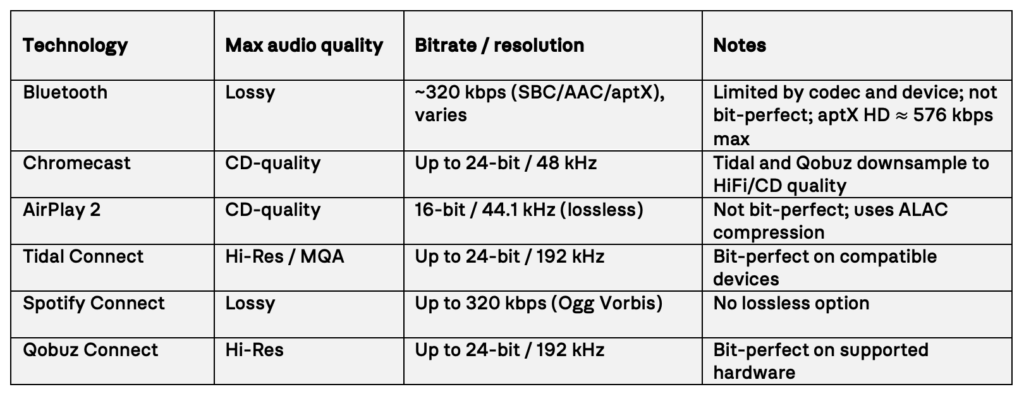Bluetooth, Chromecast, Airplay? What’s the difference?
Ole Witthøft
Most people know they can stream music from their smartphone — but few realize how much the sound quality can vary, depending on the service and technology being used.
Today, even standard smartphones support multiple streaming technologies, each delivering audio at different quality levels — from compressed Bluetooth to true high-resolution audio via services like Tidal and Qobuz. Without the right knowledge, you might be missing out on your system’s full potential.
This guide provides an overview of the most common streaming technologies and their audio quality, measured in kbps and resolution — helping you make informed choices and get the most out of your music system.
In the age of streaming, the quality of your music experience depends not only on your speakers but also on the streaming technology used to deliver the sound. This guide compares the effective audio quality of six major streaming technologies:

Bluetooth is convenient but limited in fidelity due to compression and codec constraints.
Chromecast and AirPlay 2 offer decent quality (CD-level), but not true high-resolution.
Tidal Connect and Qobuz Connect are the best choices for audiophile-grade streaming, offering bit-perfect high-resolution audio.
Spotify Connect remains lossy, though convenient and widely supported.
For users seeking the best possible sound quality, Tidal Connect and Qobuz Connect stand out as the top choices, especially when paired with high-performance speakers like System Audio’s Silverback series. These speakers are designed to handle full-resolution audio and reveal the subtle differences between streaming platforms.
Choosing the right streaming method can unlock the full potential of your music system — and your music.